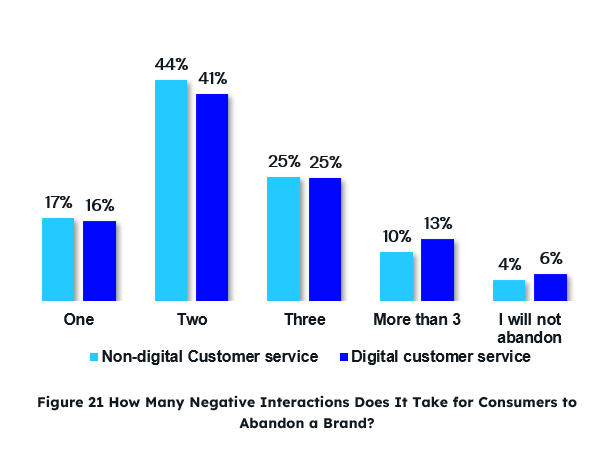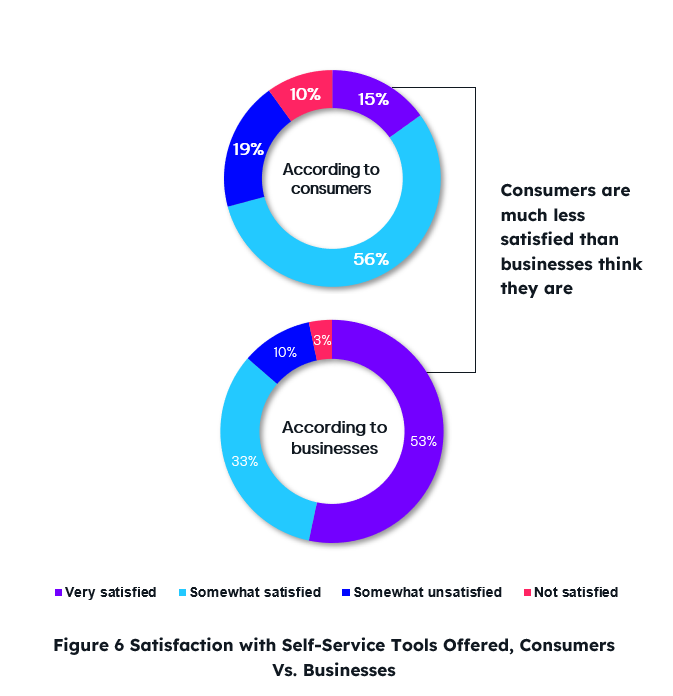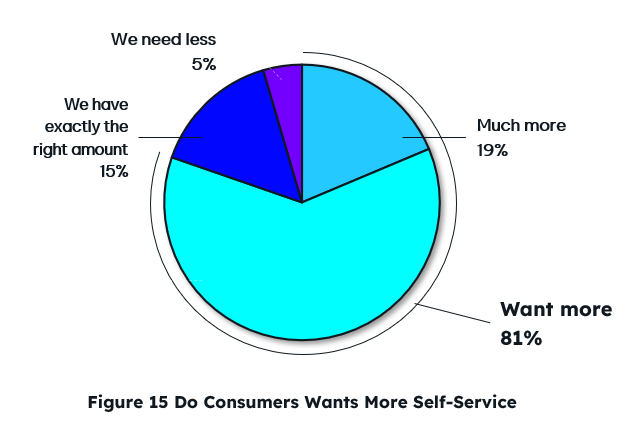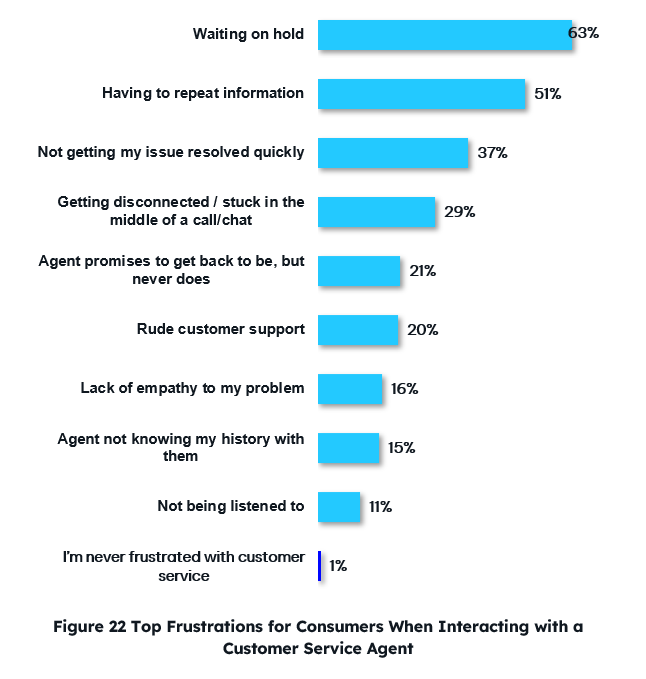Having the best customer experience management software on the market can give your business a competitive edge when it comes to delivering satisfying customer service experiences. But are you fully leveraging its capabilities, or is there some unused potential?
Most of us have had the experience of seeing someone in our lives squander their potential—the child who would be brilliant in science if he just applied himself, the employee who would be a superstar if she only cared, the sibling or friend who could write a best seller if only they could just get started.
When we witness wasted potential in our personal lives it can be extremely frustrating. Knowing someone has great talent they don't use and never will can be mind boggling. It can seem like people who waste their potential aren't living their best lives.
Similarly, I've seen contact centers not fully realize the benefits their modern CX solutions can provide. There's wasted potential there, but unlike the friend who can't focus on writing his bestseller, fully leveraging the capabilities of technology solutions is within your control.
Software features and capabilities are only useful if they enable businesses to accomplish their goals, whether they include improving CX, streamlining operations, or increasing employee engagement. How organizations use capabilities is what really counts.
With that in mind, this article will focus on use cases that the best customer experience management software platforms can execute. When you fully use your systems' capabilities to drive meaningful change, your organization, employees, and customers will move closer to living their best lives.
What is customer experience management software?
Customer experience management software (CEM software) allows businesses to measure, manage, and deliver better CX by improving customer journeys. Today's customer journeys have become complex, with customers encountering multiple touchpoints and using numerous communication channels while trying to accomplish a goal with an organization.
CEM software enables businesses to manage this complexity by providing actionable insights derived from customer and operational data. CEM solutions also help organizations deliver great CX efficiently.
Customer experience management software in contact centers
In contact centers, customer experience management software is a collection of solutions woven throughout the operation that can either directly or indirectly impact CX. These CEM tools can include:
- AI-powered analytics and reporting. Managing CX is a highly data-driven exercise. First off, brands need to have a deep understanding of their customers so they can anticipate and fulfill their needs and expectations. Businesses also need a firm grasp of what is occurring during customer journeys so they can identify and remove sources of friction.
- Effective self-service and integrated voice and digital channels. Offering a mix of support channels empowers customers to choose how and when they communicate with companies. And when those support channels are all integrated with each other, it provides a tightly woven surface customers can move across seamlessly as they switch from one channel to the next.
- Workforce engagement management (WEM). Good WEM solutions ensure customers don't have to wait long to receive help and that they will interact with competent, motivated agents. Tools include workforce management, quality management, performance management, and real-time interaction guidance applications.
- Automation. Automation tools take on mundane tasks, freeing agents to focus on relationship building and more complex problem solving. They increase call center capacity, which directly impacts service levels, and perform tasks with 100% accuracy.
Why do contact centers need top-notch customer experience management software?
Although not solely responsible for CX, contact centers play a vital role in a company's customer experience strategy. Not only are they responsible for delivering consistently exceptional customer service experiences, but they're often the first to hear about new issues that are negatively impacting customers. Carrying out these responsibilities requires modern CEM software.
Having the latest technology allows call centers to provide experiences that build loyalty and drive business results. Our recent research found that 95% of consumers said customer service has an impact on brand loyalty. Additionally, in most cases, it only takes two negative interactions for a consumer to switch to a competing brand.
On the flip side, previous research showed that most consumers agree they are willing to buy more products (87%) and are willing to recommend a company to others (81%) if they have an exceptional customer service experience.
With so much on the line, contact centers need the right technology to succeed. And they need to use it in ways that maximize the system’s value. Let's take a look at some use cases that illustrate how to realize the potential of CEM solutions.
6 use cases for modern customer experience management software
Good contact center CEM solutions enable organizations to manage and improve CX as well as streamline operations and improve employee satisfaction. It's kind of like having a multifunctional Swiss Army knife in your customer service pocket.
As we go through these use cases, which cover a broad spectrum of capabilities, think about whether your customer experience management software can pull them off.
Use case 1: Use conversational AI for smarter self-service
Effectively using self-service to satisfy customers' preferences for speed and convenience is often a gap in an organization's support portfolio. Consumers want good DIY options, but many businesses struggle to deliver.
Self-service can provide so many CX and operational benefits. In addition to meeting customer demands, self-service interactions are much cheaper than agent assistance and can improve the agent experience by offloading repetitive tasks. And the great news is that customers want more self-service.
However, 34% of consumers say self-service solutions need to get smarter so they can handle more transaction types, and that's where conversational AI can help.
Conversational AI uses natural language processing to understand human language, and machine learning to get smarter over time. When used in interactive voice response (IVR) systems and online virtual agents, users can use natural language when interacting with them. Because conversational AI enables these self-service tools to understand human language, they can handle a broader array of transactions. As a bonus, restrictive menus are eliminated.
Use case 2: Rapidly deploy a remote agent model
Industry-leading customer experience management software is in the cloud, which makes it highly flexible and accessible. How accessible? End users just need a browser and a good internet connection to access the software.
This characteristic became particularly important during the pandemic lockdowns when contact center staff were sent home to work. Because they were on our platform, one of our clients enabled 900 employees to work from home in under 72 hours.
CX rule #1 is being available to your customers. Contact centers need a CEM system that provides strong and flexible business continuity in times of crisis to minimize disruptions to customer service. When their worlds are in chaos, that's when customers need you the most.
Use case 3: Using automation to increase capacity
Call centers are notorious for having high agent turnover. Pair that with a labor shortage and you have a recipe for significant understaffing. But customers still need to be served regardless of staffing issues and they won't put up with high wait times driven by agent shortages. In fact, we found that waiting on hold is the top frustration when seeking agent assistance.
Since frustrating customers is bad for CX and new agents may be hard to find, organizations need to use alternative ways to increase capacity. Automation is one proven way to supplement agents by taking on repetitive, rule-based tasks.
As an example, robotic process automation (RPA) is a solution that can perform the same processes as a human but about five times faster. These processes can include logging into multiple systems, entering data, copying information from one application and pasting it into another, and more.
These capabilities allow RPA digital robots to perform tasks such as generating customer letters, changing addresses in multiple systems, and wrapping up a call. Automating tasks such as these can represent the workload of several FTEs and is a viable solution to agent shortages.
Automation tools can also work side-by-side with agents to make them more efficient and reduce handle times. These attended automation solutions perform tasks such as retrieving information and auto-populating forms, essentially acting as agent assistants.
Another benefit of automation is that it increases accuracy because automation tools don't make typos or forget to perform process steps. Better accuracy creates better customer service experiences.
Use case 4: Create more accurate forecasts and schedules with AI-infused workforce management software
Moving forecasting and scheduling away from spreadsheets and onto software was a giant, positive leap for many contact centers. Automating those tasks can greatly decrease the time spent doing them while also increasing accuracy. And, of course, more accurate forecasts and schedules lead to better service levels and operational efficiency.
Artificial intelligence has made workforce management applications even more effective and accurate. The forecasting process involves crunching great quantities of data, which is right up AI's alley. Artificial intelligence thrives when it consumes vast amounts of information—the more it processes, the smarter it becomes. AI is also built to make predictions, which is what forecasting is all about.
When workforce management software is infused with AI, it simplifies and improves the forecasting process by removing some of the need for human judgment. For example, the system can recommend the best forecasting algorithm to use based on a contact center's unique characteristics.
The smart capabilities also produce better and more consistent schedules, which is good for agents as well as customers.
Use case 5: Unify over a dozen international contact centers onto a single platform
When a business grows and expands, especially through acquisitions, it can find itself with multiple call centers on its hands that all use disparate, incompatible systems. This makes it difficult to provide consistent CX and take full advantage of all that capacity. Additionally, lack of consolidated reporting makes it challenging, if not impossible, to make timely, informed decisions.
One of our clients, a global provider of money transfer services, has 300 internal agents and 1300 outsourced agents in 13 different locations around the world. This created a tangled web of different systems. For example, they were using 30 IVR applications and numerous quality management tools.
When it was time to replace their unreliable, premise-based system, they chose NICE CXone. Now, all 13 contact centers, even the outsourcers, use the same customer experience management software, with less cost and more functionality. Routing improvements have reduced average handle times in digital queues by 30%, and the business can now compare quality results across centers.
Their head of customer care called the transition to the new platform "really simple." I have to ask – could you do that with your current customer experience management software?
Click here to read the case study.
Use case 6: Improve problem identification and management with interaction analytics
When businesses don't proactively identify and fix issues, more customers are negatively impacted. Stopping an emerging issue in its tracks ensures only a minimal number of customers are affected.
Traditionally, it's been difficult for organizations to identify these new problems in a timely manner. Although contact centers are often the first to hear of issues, it can be difficult to measure the scope because interactions related to the issue are scattered across agents. Additionally, sampling for quality management purposes may be too small to even identify trending problems.
This is another use case that can be handled by artificial intelligence. AI-powered interaction analytics solutions can analyze all interactions from all channels in near real-time and produce insights such as contact drivers and trending topics. This information allows contact centers to identify issues and also monitor them after fixes have been implemented to make sure the problems disappear.
One of our clients, a business process outsourcing (BPO) company, has effectively used our interaction analytics software to improve problem management for their business clients. For example, one of their customers is the country's largest non-profit daycare worker certification organization. After the BPO took on the account, customer satisfaction improved, but there was still a high percentage of customers who were dissatisfied. Using interaction analytics as an investigative tool, the BPO identified issues with their client's website, certificate distribution process, and IVR that were driving volume and customer frustration. Once the client fixed these issues, negative sentiment decreased from 50% to 11% (within normal range).
Watch the webinar to learn more.
Having the right customer experience management software in your contact center enables your organization to do more things that will ultimately impact the customer experience. If your current system can perform all these use cases, see what other capabilities you can leverage to realize its (and your business's) full potential. If the use cases are well beyond your technology's capabilities, it might be time for an upgrade. When you've maxed out your system's potential and your CX is still falling short of your business goals, you don't have the right tools to succeed.
Most of our new clients reached a point where their CEM solutions were a barrier to providing the types of experiences today's consumers expect. Transitioning to CXone gives them the capabilities they need now and well into the future. To find out why CXone is the right customer experience management software solution for your contact center, watch our product demo.







